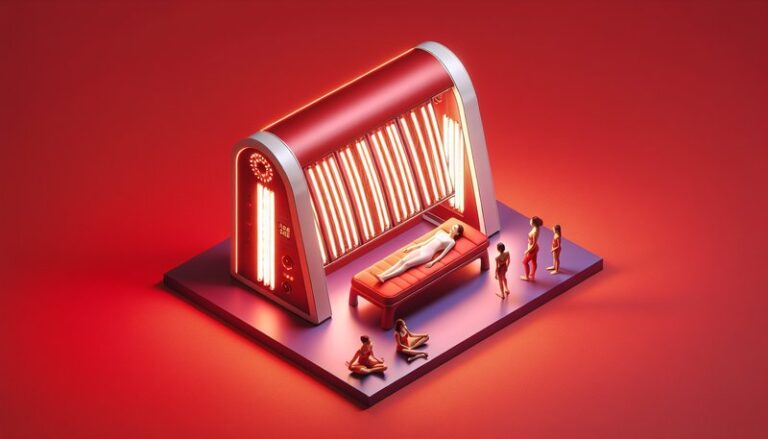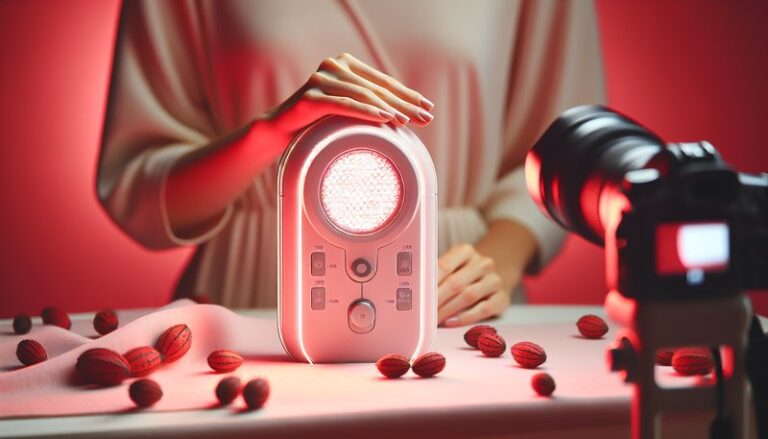Is Red Light Therapy A Hoax?
Is the buzz around red light therapy just marketing hype, or is there real science behind the claims?
Red light therapy (RLT) has surged in popularity, touted for its potential benefits in skin rejuvenation, pain relief, and overall health enhancement. But with such popularity comes skepticism. In this article, we will delve into what red light therapy is, explore its benefits, examine common misconceptions, and discuss whether it’s worth considering in your wellness routine.
Key Takeaways
- Red light therapy is a non-invasive treatment that utilizes low-level wavelengths of light.
- Numerous studies suggest potential benefits for skin health, pain relief, and recovery.
- Like any therapy, red light therapy has advantages and limitations that should be considered before use.
What is Red Light Therapy?
Red light therapy is a treatment that involves exposing the body to low levels of red or near-infrared light. This light can penetrate the skin and is believed to promote healing and regeneration in cells. The therapy is often delivered through LED devices and has been used in various settings, including dermatology clinics, physical therapy facilities, and even at home.
Mechanism of Action
The primary mechanism behind RLT is photobiomodulation, where light energy is absorbed by mitochondria in cells, leading to increased adenosine triphosphate (ATP) production. This, in turn, can enhance cell function, improve healing processes, and reduce inflammation.
Research and Use Cases
Red light therapy has been researched for various applications, including wound healing, reducing inflammation, and promoting muscle recovery after exercise. Institutions and clinics offer RLT for conditions such as acne, psoriasis, and hair loss, as well as for cosmetic purposes like reducing wrinkles and enhancing skin tone.
What are the Benefits of Red Light Therapy?
Red light therapy boasts several potential advantages that warrant further exploration.
Skin Health Improvement
RLT is often praised for its ability to improve skin appearance. Clinical studies indicate that it may reduce wrinkles, fine lines, and scars by stimulating collagen production, resulting in firmer and healthier skin.
Pain Relief and Inflammation Reduction
Numerous studies have shown that RLT can aid in pain relief, particularly for those with arthritis, joint pain, or muscle soreness. By reducing inflammation and promoting healing in targeted areas, RLT has been a valuable tool in physical therapy settings.
Enhanced Recovery and Athletic Performance
Athletes are increasingly turning to red light therapy for its potential to speed recovery after intense workouts. By reducing muscle soreness and accelerating healing, RLT may help improve athletic performance over time.
Mood and Sleep Enhancement
Emerging evidence suggests that RLT may also positively affect mood regulation and improve sleep quality. The therapy could influence melatonin production and support hormonal balance, making it a complementary approach for individuals with sleep disturbances.
Is it Possible to Use Red Light Therapy at Home?
Yes, using red light therapy at home has become a popular option. With the availability of portable devices like handheld wands and light panels, individuals can incorporate RLT into their daily routines seamlessly.
What are the Advantages of At-Home RLT?
At-home RLT offers convenience and accessibility. Users can schedule their sessions according to personal preferences without needing to visit a clinic. Moreover, many devices are affordable, making this therapy more accessible to the general public.
Read the latest on Is Red Light Therapy Effective for Inflammation?
What are the Disadvantages of At-Home RLT?
However, there are some drawbacks, including the potential for improper usage. Without professional guidance, users may not achieve optimal results or may misuse the devices, leading to underwhelming or even adverse effects. Additionally, the effectiveness of devices varies widely, making it crucial to choose quality products.
What are the Things to Consider Before Using Red Light Therapy?
Before diving into red light therapy, considering several factors is prudent to ensure safety and effectiveness.
Consulting with a Healthcare Professional
One of the essential steps is to consult with a healthcare provider, especially if you have underlying health conditions. A professional can help determine if RLT is appropriate for your needs and advise you on how to use it safely.
Device Quality and Specifications
The market for red light therapy devices is growing, but not all products are created equal. It’s crucial to research and select high-quality devices that meet specific wavelengths and intensity standards for best results.
Frequency and Duration of Use
Users must pay attention to the recommended frequency and duration of RLT sessions. Overuse can lead to diminishing returns or skin irritation, while underuse may fail to produce desired benefits.
What are the Alternatives to Red Light Therapy?
If red light therapy does not seem like the right fit for you, several alternatives offer similar benefits.
Infrared Saunas
Infrared saunas use infrared light to heat the body directly, promoting detoxification, relaxation, and pain relief. This option provides numerous therapeutic benefits and can improve circulation and skin health.
LED Light Therapy Masks
LED masks offer targeted treatment for skin rejuvenation with various light frequencies. These masks combine red, blue, and other colors to address specific skin concerns, making them a versatile option for home skincare routines.
Cryotherapy
Cryotherapy involves exposing the body to extremely cold temperatures for brief periods, which can reduce inflammation, aid recovery, and improve circulation. While different from RLT, it provides an alternative for pain relief and recovery enhancement.
Conclusion: Is it Recommended to Use Red Light Therapy?
In conclusion, red light therapy is backed by emerging scientific evidence and has shown promise in various applications, including skin health, pain relief, and recovery. However, like any treatment, its effectiveness can vary based on individual circumstances and device quality. Consulting with a healthcare professional and selecting high-quality products can help determine if RLT is suited to your wellness routine.
Frequently Asked Questions
Is red light therapy safe?
Yes, red light therapy is generally considered safe when used as directed. It is non-invasive and has minimal side effects, but individuals should consult their healthcare provider if they have concerns.
Read the thorough analysis Can I Use My Phone During Red Light?
How long do the effects of red light therapy last?
The duration of effects can vary based on the individual and the condition being treated. Many people notice immediate benefits, while longer-lasting improvements may require consistent treatments over weeks or months.
Can anyone use red light therapy?
While most people can benefit from RLT, those with certain medical conditions or skin sensitivities should consult a healthcare professional before starting treatment to ensure it’s safe for them.
How often should I use red light therapy for optimal results?
Frequency can vary depending on the device and your specific goals. Most recommendations range from 2 to 5 times per week. It’s essential to follow the manufacturer’s guidelines and consult with professionals as needed.





